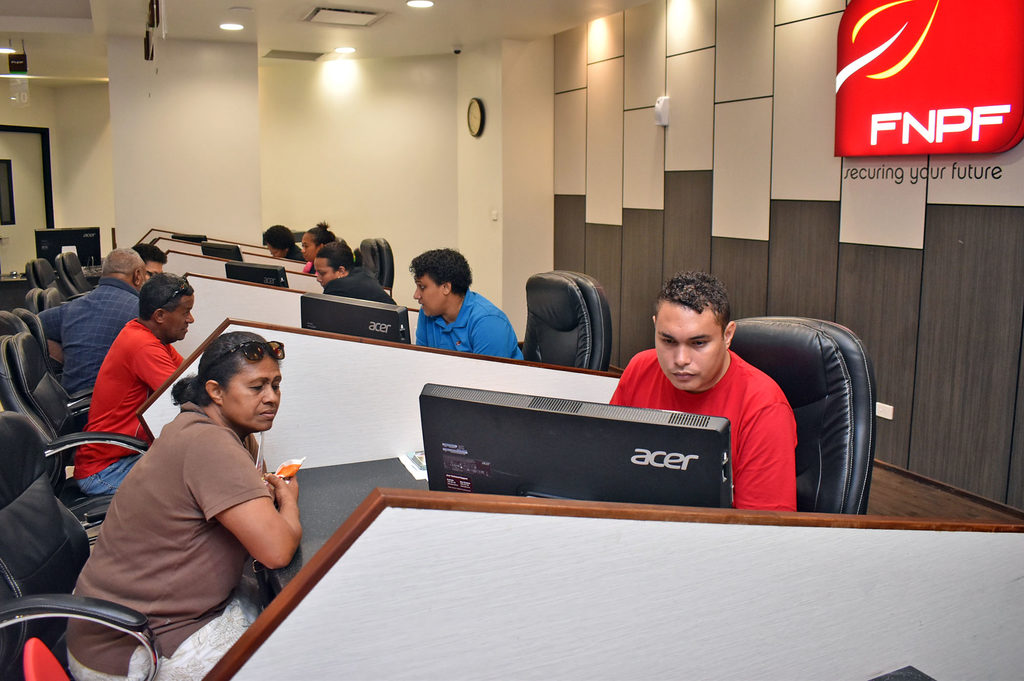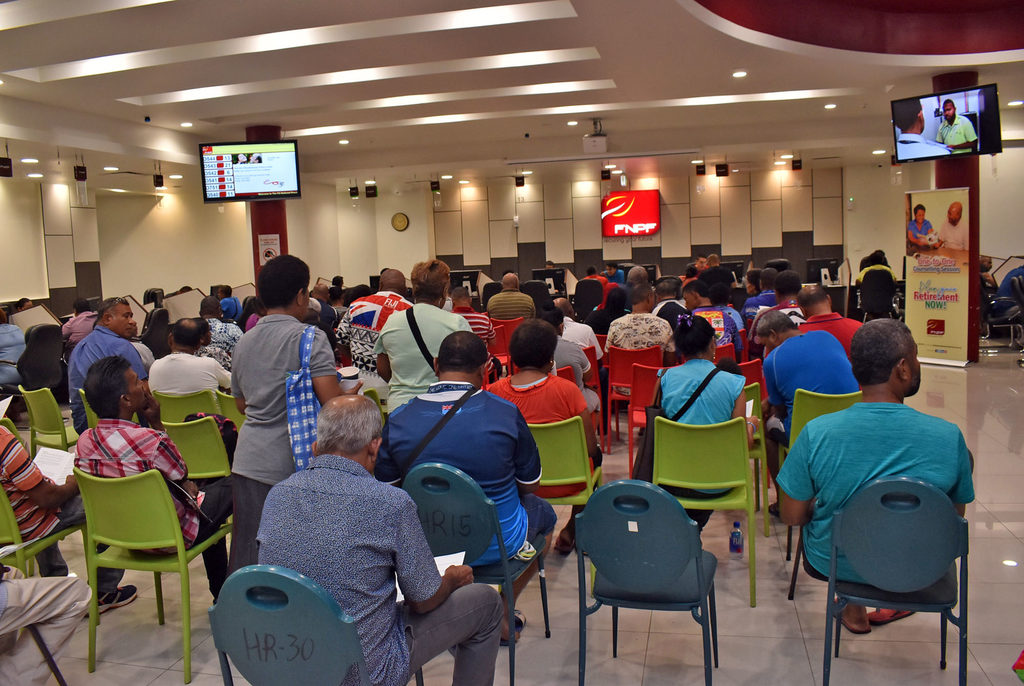Despite all the glossy FNPF Annual Reports proudly claiming to serve the members of the FNPF and a recent grand expensive propaganda exercise “thanking the members” (for what?), the FNPF board and management have quietly concealed the disastrous decline in the “pension take-up rate”, a key performance indicator of this “pension” fund (see graph).
Once upon a time, this graph used to be shown in some FNPF’s Annual Reports, but they have been quietly removed in recent years.
The “pension take-up rate” is the percentage of retirees who choose to take the pension option rather than the lump sums in their accounts when reaching the age of 55.
Why have the FNPF board and management deliberately ignored that the pension take-up rate has remained less than 4 per cent after the robbery of the 2012 pensioners (which group included me). Why has such a crucial graph been removed?
Is it that they do not want the members to know that 96 per cent of retirees no longer have confidence in the board and management of FNPF, and choose upon retirement to take their lump sums rather than the low pension rates offered by FNPF?
This collapse of the pension take-up rate has also been conveniently ignored by the NZ Actuary Rashbrooke who was one of the advisers during the 2012 Robbery and is still disgracefully defending the robbery in the media, despite it being described by Minister of Finance Professor Biman Prasad in his 2024 budget address as illegal.
Why have the FNPF board and management not publicly disassociated themselves from Rashbrooke’s media utterances? Are they secretly glad that Rashbrooke is doing their dirty work in resisting the 2012 pensioners’ plaintive calls for justice?
(I make no further comment on the FNPF management as they are mere “employees” and should never ever have been so unethically involved publicly in policy decisions which are the sole responsibility of the Board).
Origins of Pension Buffer Fund
Make no mistake, the FNPF was originally set up to provide Fiji workers with a decent pension after retirement at the age of 55, and it was always described as “pension fund”.
That pension take-up rate was initially not particularly high because many retirees, especially iTaukei, were taking the lump sums which were often quickly spent because of the strong communal demands on them.
With the Ratu Mara Government setting a high pension annuity rate of 25 per cent to encourage retirees to take the pension option the pension take-up rate then rose to a high of 37 per cent around 2003 (see graph).
The Fiji Parliament then approved on a 2-cent deduction from all FNPF contributors to set up the pension buffer fund to ensure that those taking the pension option could be funded.
While this of course meant that all FNPF contributors were helping to pay for those taking pensions, this was a lawful parliamentary decision, just as the recent 7-year tax holiday for a water bottling company.
When the Pension Buffer Fund became large the 2-cent deductions were stopped and Parliament also decided to bring down the pension annuity rate from 25 per cent to 15 per cent, one percentage point per year.
Again, Rashbrooke (with the complicit support of the FNPF board and management) have completely ignored that these annuity rates were set by Parliament and became the law of Fiji.
Whatever one personally thinks about their “generosity”, these reduced annuity rates also resulted in the pension take-up rate gradually sliding down towards 5 per cent probably because Fiji retirees dreaded dying early and losing all. After all, there is data indicating that Fiji life expectancies have been declining over the last 20 years and many have been dying before reaching even 65 years of age.
Rashbrooke in his writings has contemptuously ignored that both the establishment of the Pension Buffer Fund and the gradual reduction of the pension annuity rate from 25 per cent to 15 per cent have been according to the laws of Fiji, decided by lawfully elected Parliaments, decisions which must be respected by all in Fiji and outside. But apparently Rashbrooke has no respect for Fiji laws, lawfully created but is willing to justify illegality.
Then the 2012 robbery
In all his writings, Rashbrooke (with the explicit and complicit support of all the FNPF boards) has conveniently ignored that the pension annuity rates prior to 2012 were freely offered by FNPF itself (as dollar amounts per month) and signed into lawful contracts by pensioners who were warned on the 9NOP Forms that these contracts were legally binding and could not be changed by them.
In all his writings, Rashbrooke (with the complicit support of all the FNPF Boards) has conveniently ignored that the illegal 2012 reduction of the pension annuity rate to around 9 per cent was implemented by an illegal military Bainimarama government outside of the rule of law and broke the fundamental sanctity of contracts.
Rashbrooke and all the FNPF boards have conveniently ignored that the same illegal military Bainimarama Government threw out of court the David Burness case being fought by lawyer Dr Shaista Shameem (current Vice Chancellor of University of Fiji) whose economic case was formulated by myself. This illegal military decree also denied the late David Burness his basic international human right to go to court with his perceived grievance.
Is it poetic justice that the same former illegal prime minister who denied the humble pension of the lawfully elected prime minister, the late Laisenia Qarase, and who halved the moderate to low pensions of some 10,000 retirees, many to below the poverty line, is today suing the Rabuka Government for the payment of a massive pension and gratuity payments (in excess of $300,000), that his own government set for him?
It is disgraceful that Rashbrooke and the FNPF Board to date have never acknowledged that the Pension Buffer Fund, if properly credited with the interest rate being credited to all other funds, would have been more than $900 million around 2012 (as estimated independently by pensioner Jackson Mar and myself), more than enough to pay the liabilities for all the 2012 pensioners (as estimated by FNPF actuaries).
In both examples, there are no subsidies required by the 2012 pensioners from the general members; indeed the subsidies have been from legally allocated funds for pensioners to the general members who have thereby received higher interest annually.
Sadly, the FNPF 2012 Annual Report (signed off by the FNPF Board) falsely showed graphs of the Pension Buffer Fund becoming zero in ten years, because the FNPF board and management cunningly refused to credit the Pension Buffer Fund with the interest it deserved to be credited with, despite it being profitably used by FNPF in its investments.
Remember also that FNPF last year credited all its members with a record high 8 per cent, when its legislation clearly decrees that no rate higher than the rate of inflation must be made, unless all its liabilities were covered.
Clearly even in 2024, the FNPF Board did not regard what it owed to the 2012 pensioners as a legitimate and ethical legal liability which should be shown in its accounts.
FNPF board and management complicity
It should be noted that when the Bainimarama Government was illegally reducing FNPF pensions in 2012, no FNPF Board member or senior management ever resigned over the unethical and illegal breaking of the contracts of innocent 2012 pensioners.
The facts are that many on the FNPF board and management actively and unethically campaigned supporting the illegal restructure.
It should be noted that while Actuary Rashbrooke has published many opinion pieces and Letters to the Editor in the last few years, justifying the 2012 illegal restructure, no statements have been issued by the FNPF board and management, disassociating themselves from Rashbrooke’s views, even though he is a member of the FNPF Audit Committee.
It should be noted that despite the Minister of Finance labelling the 2012 restructure as illegal and indeed restoring the pensions of those who had accepted the lower pensions in 2012 (but not the backpay and not the losses suffered by those who were forced to take lumps sums in 2012), no statement has been issued to date by the current FNPF board or management in support of the Minister of Finance’s statements and initiative through the 2024 Budget.
Because to do so would be to acknowledge that the FNPF today, as a body corporate, also has an ethical and legal liability to compensate all those 2012 pensioners who were forcibly deprived of their lawful property granted then by lawful elected Fiji parliaments, prior to that 2012 robbery.
Is there a secret plan today?
While the Prime Minister has quite legitimately (as head of Government) requested his relevant line ministers to do the right thing by the 2012 pensioners according to the rule of law, foreigner Rashbrooke has the temerity to call this out as a “conflict of interest”, with no censure from the FNPF Board.
While there have been many opinion pieces and Letters to the Editor by 2012 pensioners calling for full justice for the 2012 pensioners, their calls appear to have fallen on deaf FNPF Board and ministerial ears
We need to remember that the Minister of Finance has at least three board members sent there by himself some of whom are enjoying all the perks of membership of large companies owned by FNPF.
Is there some quiet understanding within the FNPF Board (and management) that there may be some financial advantage for FNPF and the Minister of Finance to not respond ethically to the 2012 pensioners’ Submission on September 17, 2024?
One obvious carrot may be more generous FNPF loans (quantity and rate of interest) to the Fiji Government for the next budget.
There may be another carrot, encouraged by the recent $6 million payout by the Minister of Finance to the ATS workers over COVID setbacks (The Fiji Times, May 15, 2025) that the FNPF Board may agree to use its considerable liquidity to purchase a very profitable public enterprise (possibly related to the ATS) for a massive sum which the Minister of Finance may then use to significantly reduce Fiji’s public debt.
Some of us can remember a similar tactic used by Minister of Finance Ah Koy in 1998 when he sold ATH shares to FNPF at an over-generous price, to cover the $200 million increase in public debt due to the collapse of the NBF.
Of course, reduction of public debt can be a useful campaign tool for Government at the next general election.
Sadly, both these carrots conveniently ignore that the 2012 pensioners have been willing to accept lawful restitution in stages so as not to put abrupt pressure on FNPF liquidity.
I suspect that if the FNPF Board were to sit in good faith at the bargaining table with the 2012 pensioners, moderated by the Minister of Finance, there could be an amicable resolution of the terms of settlement.
The tragedy is that while those wielding power delay, more pensioners will die without justice being done them, as many already have.
PROF WADAN NARSEY is one of the region’s senior economists and a regular commentator on political and economic issues in Fiji. He is one of the affected 2012 pensioners. The views expressed in this article are not necessarily the views of The Fiji Times.
Fiji National Provident Fund members are served by staff at the FNPF Building in Suva. Picture: FILE/JONACANI LALAKOBAU



